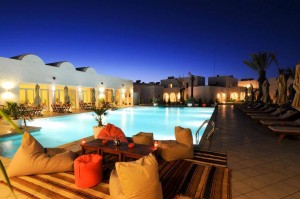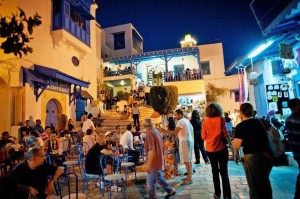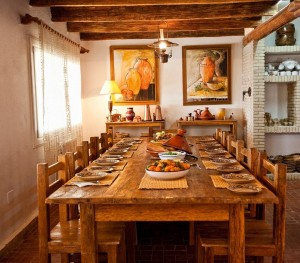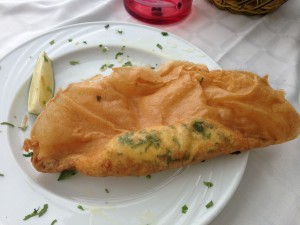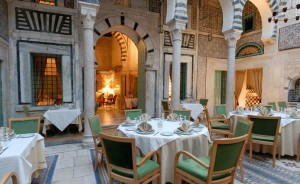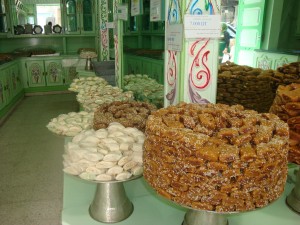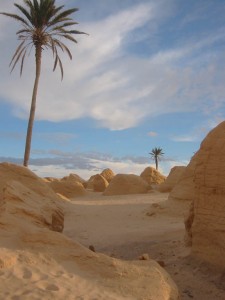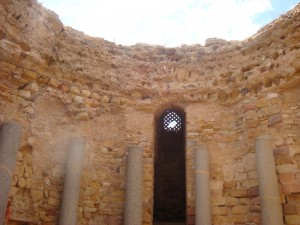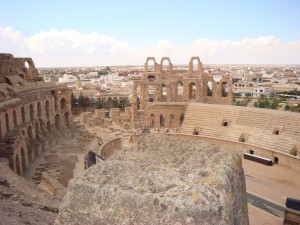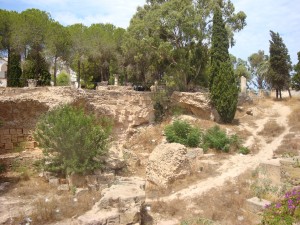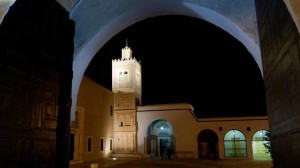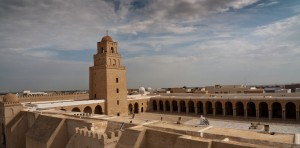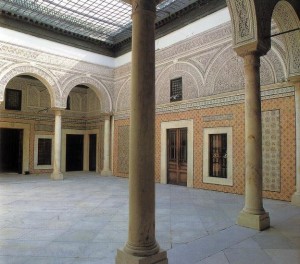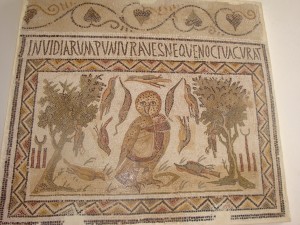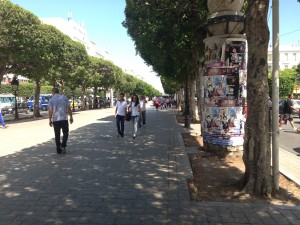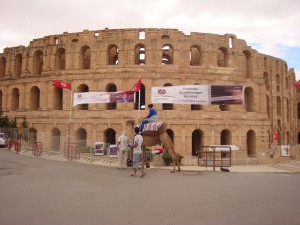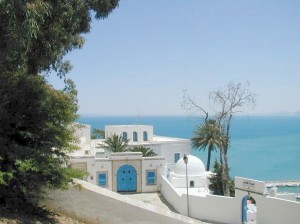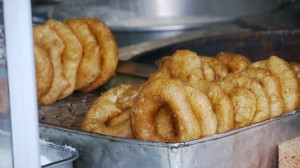“PromoTunisia was founded in 2002 as the English speaking marketing arm of Promotel, a long established and highly respected inbound operator.
The company’s mission is to target the U.S. market, specifically clients interested in archeology and culture, with offerings of guided holidays built around themes such as music, festivals, cuisine, arts and traditions with the added bonus of providing clients with a Tunisian people experience.
“We focus on Tunisia”, comments Mr. Mohamed Malouche, the company’s general manager, “because it is our motherland – we know it, love it and are expert at making clients fully enjoy it.
From desert oases to Carthaginian ruins, Tunisia is bound to delight your senses. Discover the date palm fields and taste the sun-kissed olives on your journey through this fantastic North African destination. Marvel in the largest collection of ancient mosaics in the world, the dunes of the Sahara Desert, or relax on the beaches of Djerba Island.
Tunisia is one of the few places in the world where our visitors can compress centuries of history into a pleasant environment.
Melting pot of the Mediterranean
Tunisia is a country full of contrasts that possesses the gift of harmony: it has witnessed successive civilization of opposing cultures, Phoenicians, Carthaginians, Romans, Turks, Arabs, Spaniards, French, and yet in spite of the ruins and the bloodshed, the scars left are not deep.
On the contrary, this succession of administration has established continuity, with each new regime taking something for the better, from the one that preceded it.
Rome, for example, not only left to Tunisia some of the most admirable monuments of Roman Africa but also a culture, a spirit even, an impression of cosmopolitanism and tolerance that today, twenty centuries later is still very much alive.
You may very well say that all this has little to do with holidays. Not at all. The tourism that PromoTunisia is championing not only consists of admiring beautiful sites, visiting museums and tasting the great Tunisian cuisine, but above all of absorbing something of the real life around.
Weaving of influences, at the crossroads of Africa, the East and the West, in the heart of the Mediterranean ethnic mixing, country with a booming economy, Tunisia offers a multiplicity of faces in harmony with its culture and traditions but geared towards progress and modernity…it seems to gather in one single place the various looks of the towns around the Mediterranean basin.
Safety and Stability
Entertaining close relationships with foreign countries since Antiquity, thanks to his fame as a navigator and his hospitable nature, the Tunisian, in the image of his very mixed culture, integrates the differences…
Tradition and modernity rub shoulders. In a country enjoying climatic and political stability, the houses still keep an open door to the street. The mean of communication are very reliable and sightseeing is easy and full of joy.
History, Nature, Desert, Cuisine, all in one place
In Tunisia, you will enjoy discovering a 3000 years history legacy made of great civilizations while appreciating nature in all of its aspects, sea, mountains, plains and desert.
Tunisia unites various geographical, climatic and cultural characteristics that make it ideal for lovers of areas where the sea, mountains, oak and willow trees forests overlap.
The quietness of the sea is ideal for relaxation and energy rebuilding, but Tunisia is also a great place to spend you day in various sports activities, such as golf overlooking the sea front, water sports, sailing, fishing…
Tunisian’s gastronomy finally will be the highlight of your trip through the variety of the meals, the flavor of the spices and the freshness of the ingredients.
Tunisia has high quality standards in service, modern facilities and infrastructure, highly competent and skilled tourism professionals.
The most dynamic, advanced and sophisticated Arab society
Dynamic society, the most progressive institutions in the Arab world, a buying power getting closer to that of the developed countries, Tunisia is considered as the African and Arab “tiger”. The country’s economic model that was put in place after the independence, and the focus on education, health and infrastructure built a modern state. There are no differences between girls and boys at school, both genders are required to attend school until the age of 16. However, in the 21st century, Tunisia’s post independence economic model could not last with globalization and technology, and in 2011, Tunisia was the birthplace of the Arab Spring revolutions. 50% of Tunisian are less than 25 years old and they rose to demand dignity, more economic opportunities, more justice and a system that is fair and balanced.
Women and youth were at the forefront of this movement. Women are well established at every level of the society, they enjoy a unique status in the African and Arab World: Tunisia is indeed a country that provides equal rights to women and men since 1956 and the only Arab country that prohibits polygamy by law.
Land of Tolerance
Arab, Berber, African, and European influences have helped shape the unique Tunisian cultural identity. The overwhelming majority of the population is Muslim, and the official religion is Islam. However, Christian and Jewish communities practice their faith freely and contribute to Tunisia’s rich cultural diversity.
A modern and tolerant Islam
Tunisia’s historically moderate and pragmatic character is reflected in its approach to Islam, the religion of the vast majority of its population. Conciliation and modernity have characterized the Tunisian approach to Islam for decades and even the nation’s theologians refute the fundamentalism and conservatism of radical Islamic movements. Violence is foreign to the Tunisian character and is entirely unacceptable, whether in the name of religion, economic advancement or political gain.
Although the Jewish and Christian populations of Tunisia are very small, the practice of tolerance and brotherhood is considered a basic concept of the Islamic tradition, which grew from Judeo-Christian roots.
In the 3rd and 4th centuries, church fathers such as Tertullian, St Cyprian and St Augustine worked and preached in early Christian Carthage. Remains of early places of worship and art are evidence of a significant indigenous Christian population, whose disappearance by the 12th century has not been fully explained by historians.
Christianity in Tunisia
While there are no native Christian communities in Tunisia, Christian instructions remain welcome. Over two hundred Catholic priests and nuns run churches, among them the Tunis Cathedral, as well as seventeen schools wich educate 6,000 Muslim students. Christians assist in the care of handicapped children and the White Fathers’ Institute of Arab Humanities is still a center of intellectual influence.
In April 1996, Pope John Paul II visited Tunisia and enjoined Tunisians to defend the presence of Christians, as well as to carry on the dialogue with moderate Islam.
Judaism
How old are Tunisian’s Jewish settlements? The answer to this question is almost as hard to determine as the age of Judaism itself or the geographic origins of the Berbers. The Jewish community on the island of Jerba is thought to date back to 600 BC, which would make them contemporaries of the Phoenicians who settled on the coast and eventually became Carthaginians.
Did Tunisia’s first Jews, then, come with the Phoenicians from the Middle East?
History gives evidence that the indigenous Berber tribes were pragmatic in the way they blended influences in the transition from paganism. Some chose to become Jews. In fact the redoubtable El Kahina, who led the Berber resistance to the Arab invasion was likely Jewish.
By the 6th century, Jews in Jerba established the Ghriba Synagogue, which became an important site of Jewish pilgrimage. While the present building dates from the 20th century, it holds Torah scrolls which are among the oldest in the world.
Although many Jewish Berbers accepted Islam, others clung to Judaism. To their numbers were added successive waves of refugees from persecution in Europe. From the time of the Visgoths through the Spanish inquisition to the Second World War, Jews found refuge in Tunisia.
Family Values
Family Values
The family remains the basic unit of Tunisian society. With the assistance of public and private institutions, it continues to function as a vital support mechanism for the individual at all stages of life. The resilience of the family structure did not prevent women from gaining a good measure of autonomy and pursuing their own careers on an equal footing with men.
Women’s role
The legal rights and freedom which Tunisian women enjoy are unparalleled in the Arab world. Yet just two generations ago they shared the disadvantaged status of women which often characterizes Arab society.
The rapid and permanent change in the status of women owes much to the personal vision of Tahar Haddad and former president Habib Bourguiba and his ability to institute sustained, far-reaching reforms.
Among the first measures he took after Independence in 1956 was to introduce the Personal Status Code to improve the social position and treatment of women. This code stated that polygamy was abolished, persons directly concerned by marriage must consent to it, marriage of a minor needs to be authorized by the mother as well as the father, divorce is the prerogative of either the wife or the husband, Women have legal access to family planning and hospital abortion, penalties are the same for male and female adulterers, equal wages are required for equal work, everyone has the right to an education without discrimination. School attendance has long been mandatory and gratis and Tunisian women have voted since 1957.
Having enjoyed full access to public life since the Independence, Tunisian women, today, are government ministers, doctors, lawyers, business owners, executives, and airline pilots.
Language
The official language is Arabic. French is widely used and English and Italian are spoken among a growing number of Tunisians.
Geography
Located at the northernmost tip of the African Continent, Tunisia spreads over an area of 164000 km².
Given its small size, Tunisia’s contrasting biological diversity is remarkable: over a distance of only a few hundred kilometres, one can pass from a Saharan landscape to lush cork oak forest which is easily accomplished by car in less than a day’s time! In addition, Tunisia is surrounded by approximately 750 miles of coastline, given the highest ratio of coastline to total surface area of all the countries in Africa.
Tunisia lies within two hours of most European capitals and has air links with a total of 50 cities. Its seven international airports are served by flights by major international airline and by Tunisair, Tunisia’s own airline, which enjoys an excellent safety record.
Passengers from North America can make easy connections through any of the major European gateway cities: London, Paris, Frankfurt, Geneva or Rome. There are still no direct flights from the United States.
Development
Due to its limited natural resources, Tunisia has focused on developing its human resources: the bulk of the national budget has been allocated to education, health care, housing and social services, while a comparatively small amount was spent on defense. Education is mandatory for girls and boys between the ages of 6 and 16. The private sector is encouraged to play a leading role in economic growth, and as a result, Tunisians have created a modern, diversified market-oriented economy based on an efficient agricultural sector, a growing manufacturing sector, and a thriving tourism industry.
Economic Success
Tunisia’s GNP and social indicators have risen steadily since the independence in 1956. Per capita income has increased sevenfold, from $300 in 1956 to over $2,370 in 2010. Tunisia has enjoyed an average growth rate of 5.4 percent since the beginning of the 90s. Despite this achievements, Tunisia is in need of profound economic reforms, as it needs a growth rate of 8 to 9% to absorb the flux of youth who graduates from universities every year and address the unemployment issues.
Money & Banking
The Tunisian Dinar (TD) is a soft currency and is illegal to export it from Tunisia. The exchange rate with all major currencies is fixed daily on a nation-wide basis and is the same in banks, exchange booths, and hotels.
The dinar is divided into 1000 millimes. Prices are expressed in thousands and written with three digits to the right of the decimal. One US dollar equals about 1.6 to 1.7 TD .
Bank notes are issued in denominations of 5, 10, 20, and 30 TD. There are aluminum coins of 5 millimes and brass coins of 10, 20, 50 and 100 millimes.
Banking Hours are Monday to Thursday from 8:00 – 11:30 AM and 2:00 – 5:00 PM and Friday from 8:00 – 11:30 AM and 1:30 – 4:30 PM
Major credit cards – Visa, MasterCard and sometimes American Express – are accepted in hotels.
Credit cards and debit cards sometimes do not work in local cash machines. Travelers’ checks can be exchanged at banks, airports and some hotels. Do not expect small shops to accept credit cards, travelers’ check or foreign currency.
Visa & formalities
Citizens of the United States and the European Union do not require visas for a stay of less than three months. Debarking passengers are asked to fill out a simple two-part registration form; one portion is presented upon arrival and the other kept for presentation at the time of departure.
Visitors will be asked to fill out similar forms when registering at hotels.
Citizens of Australia may obtain tourist visas from the Tunisian consulates in their countries.
Note for visitors with disabilities
As a matter of government policy and reflected in general awareness, Tunisia’s citizens with disabilities are well integrated in schools, universities, workplaces ad community life throughout the country. Parking spaces reserved for the handicapped and wheelchair access in downtown areas have become standard.
PromoTunisia welcomes guests who use wheelchairs or who have other disabilities. However, it is important that we know of your special requirements as soon as possible since many historical sites are not easily accessible and special arrangements may have to be made for hotel accommodations.
Leaving Tunisia
Always keep receipts from your banking transactions so you can re-exchange dinars upon departure. However, there are strict regulations about the quantity of dinars you can change back when leaving the country. You are allowed to reconvert up to thirty percent of the total amount you can prove you have changed since your arrival, provided it is not more than 100 TD.
The successive races who have lived and intermarried have helped, with their various tastes and customs, influence the Tunisian cuisine.
Appetizers
The modern Tunisian gastronomy offers a wide choice of hors d’oeuvre. The most popular is the famous “brik a l’oeuf“ and tuna: It consists of triangular shaped pastry which is stuffed with tuna, herbs, an egg and fried in oil. One finds them in the menu at every gargote. If the pastry is too thick, the Brik becomes brick and the point is lost.
There are also various salads containing vegetables like the salad méchouia or meats like the salad of octopuses. Like all Mediterranean people, the Tunisians love to nibble at a selection of appetizing bits and pieces as soon as they sit at the table. In Greece, Turkey or Lebanon, it is called the Mezze, here Kemia, and it is this course that whets the appetite and begins the conversation around the table: tiny octopus, clams, pimentos, olives, harissa, the national hot sauce, tuna, merguez (a sausage of beef or lamb grilled over charcoal). There is a great variety of soups from vegetable soups to fish or lamb soups. With this great diversity, each area adds particular components: in Tunis, it is specific hors d’oeuvres like Brik Danouni. The typical dish in Sfax is the fish soup. Djerba’s speciality is a preparation of rice a la jerbienne. In rural areas, one still appreciates a multitude of very simple primitive preparations, often based on home made bread and harissa, the Tunisian national spicy sauce. Tunisian’s appetizers also include Home pressed olive oil, few green olives, country bread, heavy and grainy and a salad of sliced scarlet radishes or plump tomatoes served with grilled fish.
Entrees
A favorite way to prepare young lamb is coucha – portions of shoulder meat are rubbed with a sauce of olive oil, salt, a sprig of mint, a touch of cayenne pepper and turmeric and baked in a slow oven in a tightly covered earthenware dish. Ragout sauces are innumerable. It basically consists of a sauce containing tomatoes raised with various spices. From this sauce one can prepare an infinity of dishes whose diversity comes from the mode of preparation but especially from the composition. The tajines are pies that are prepared with vegetables or meat. Fish is variously prepared from simple grilling to the most elaborate preparation. Pampered by miles of coast and a unpolluted and generous sea, seafood is a mainstay of the Tunisia diet. Without question, the blue ribbon goes to the Rouget -red mullet, a delicious fish either grilled or fried . The varieties of seafood from the imperial royal shrimp to the familiar and much appreciated sardine are endless and each region has its recipes and secrets for preparation. Jerba in particular is known for the excellence of these gifts of the sea. The national dish remains obviously the couscous. It is a semolina cooked with the vapor and sprinkled, after cooking with a sauce. The seeds can be large, average or fine. It is specifically the sauce which, by its contents, makes the infinite variety of the couscous: vegetables, fish, octopuses, lamb, beef, chicken… Among the other dishes that you are most likely to come across is the chakchouka, a ratatouille of fresh tomatoes, pimentos and onions and the koucha, shoulder of meat with whole chilis and potatoes cooked in the oven… For desserts, fruits are preferred to creams and ice creams. Tunisia is well reknown for the quality and sweetness of its fruits. Also traditional pastry made of almonds, nuts and dates is traditionally prepared.
Desserts
Sweet loving Tunisians have adopted the Turkish baklava – layers of whisper thin pastry interspersed with ground pine nuts, almonds, hazelnuts and pistachios, bathed in golden butter, baked and dipped in a honey syrup. No holiday, wedding, christening or dinner party could be considered without it. Sweet loving Tunisians have adopted the Turkish baklava – layers of whisper thin pastry interspersed with ground pine nuts, almonds, hazelnuts and pistachios, bathed in golden butter, baked and dipped in a honey syrup. No holiday, wedding, christening or dinner party could be considered without it.
Other sweets, makroudh ,a specialty of Kairouan of semolina pastry stuffed with dates, caak, almond paste wrapped in fine dough ,as well as a myriad of regional specialties make up the traditional platter served for every joyous occasion. The vast almond orchards of Sfax supply the different types of almonds that are the basic ingredient of most sweets and cakes. Tunisian pastries are given as gifts for holidays and are well worth a trip to the nearest pastry shop. As for drinks, mint tea is traditionally served in Moorish cafes.
Wines
Tunisian wines cover a wide range of reds, whites, roses and muscatels. The art of vine growing and winemaking dates back to the earliest antiquity. The agronomist Magon, who lived in Carthage at the time of the Phoenicians, recorded in his Treatise of Agronomy viticulture, wine-producing practices that are still in use nowadays. In the Roman mosaics, Dionysos-Bacchus, the god and guardian of wine, contributes to ride high in triumph.Today, Tunisian wine continues to boast the high repute that the sun, soil and time-honored Tunisian traditions have conferred on it.
Social Events
Tunisian meals are social events and the longer the better. PromoTunisia will take you to the local gargotes where local food has both taste and character or organize picnics for lunches and will invite you to fully appreciate the Tunisian gastronomy in the best restaurants for dinner. It will go further and make you discover the ritual attached to this cuisine and allow you the unique experience to participate at the elaboration of one of your dinner A typical meal would begin with shorba frik- lamb soup with flavored with tomato paste, coriander, parsley and seasonings in which green spring wheat grains are slowly simmered, is served with slices of lemon. Brik, followed by Slata mechouia – grilled green peppers , tomatoes and garlic finely chopped .Spices and olive oil are added and the salad is garnished with tuna fish, hard eggs, olives and capers. Dinner will now begin. Assorted stews follow roasts of lamb, veal or fish, tajine – a rich, flavorsome omelet baked with chopped meat, vegetables and cheese. Fresh salad, fruits, pastries and custards, coffee and tea make the finale. While most Tunisians like their food hot and spicy, restaurants and hotels prepare their menus considering the tastes of their visitors and serve harissa separately. This condiment is made of crushed dried red peppers, garlic and spices and adds a definite zest to any meal. It is a mainstay of many dishes and can be toned down by a touch of olive oil.
Explore the edges of the World’s largest desert and its oases, haven of peace surrounded by dunes stretching to infinity
In the calm and imposing extent of the Sahara Desert, enjoy the incredible experience of a camel caravan that takes you over the sand dunes at sunset and the silence and incredible mirages of the Chott El Jerid salt lake.
The Chott is a great expanse of glittering salt where it is possible for one to journey 30 miles in the center of an immense and desolated area. Muddy in winter and covered in summer with a glittering, crackling crust, this is the season when fantastic forests and cities seem to appear on the horizon, only to be discovered as mirages.
The oases and the chotts provide a strange, unearthly, unique atmosphere, an impression of infinite open space; A ground haze shimmers in the sun, and a far-distant camel train seems to be floating on air. Mirages of palm trees can sometimes be seen in the afternoon.
The main oases, which must have seemed visions of paradise to early travelers, nourish countless date palms.
You will also discover species of flora and wild fauna protected by the law, agriculture techniques specific to the oases, clever systems of division and management of water, ksars of mountain which are citadel-refuges perched on rock pitons and the troglodyte homes in the form of houses dug in the ground on the side of cliffs.
Sites and Oases to visit
The easily accessible Gabès, site of a southerly seaside oasis which can be toured in a horse-drawn caleche, is also a port and a good base for excursions through the chotts to the inland oases of Gafsa, Tozeur, Nefta and Douz, or southwards to the Sahara and theMatmata Mountains.
Gafsa is a city of rose-pink walls, whose warm thermal water spring bubbles up into three large Roman cisterns. Just out of town is a zoo displaying indigenous animals and birds, as well as the oasis, which can be toured by horse-drawn carriage.
Tozeur has perhaps the most luxuriant oasis of all. Its 200 springs feed thousands of the best date-palms – each towering tree is said to need 3500 cubic ft of water a day. It can be toured by donkey or camel, and contains a ‘Paradise Garden’ profuse with exotic flowers and fruits. Tozeur’s town buildings are built with unfired yellow bricks picked out in geometric patterns similar to those found on Arab rugs.
Nefta’s oasis resembles a bowl, and is known locally as a basket or ‘horn of plenty’. The town, made up of sand-coloured houses, is on a plateau above it. Guides are available for the trek on donkey back to the oasis.
North of Tozeur and Nefta are the mainly mud-walled villages of Chebika, Tamerza and Mides.
To the southeast, via Kebili, lies Douz, on the “Grand Erg Oriental”, the great sand-sea of the eastern Sahara. Its Thursday camel market is a camera-worthy event, as is the marhoul ceremony celebrating the start of the seasonal desert migration. Such rituals – as well as camel-wrestling, poetry ‘jousts’ and folk dance and music – are incorporated into a Sahara Festival which takes place near Douz every January.
Around this region live veiled people of pure Berber stock. You may also find a ‘desert rose’ of crystalline minerals baked by the sun into petal-like formations.
Matmata and Tataouine, locations used during the filming of ‘Star Wars’, consist (as do other Berber villages) largely of sizable holes burrowed into the ground, a useful defense against the fierce summer heat and cold winter winds.
Their homes are built on two levels, the upper one containing storage rooms. In some cases, several of these underground dwellings have been connected together to make hotels and restaurants.
Two of the most beautiful mountain ksars are Ouled Soltane, south of Tataouine, and Chenini, to the west. The road to Chenini is a memorable one, zigzagging through a cinnamon-coloured mountainscape.
For walking enthusiasts and lovers of open spaces and exploring, Tunisia has a corner of the Great Eastern Erg of the Sahara desert that offers vast spaces for exploring and the emotion of tasting the nomad life.
A 3,000 years history provides Tunisia with an exceptionally rich legacy.
Cultural icons
Tunisia has a wide variety of historical settlements, Punic, Roman, Byzantine and Islamic, many of which are in excellent condition.
Legend tells how princess Dido founded the city ofCarthage in 814BC. The Carthaginians grew in power until they became major rivals with the Romans for dominance of the Mediterranean.
Led by Hannibal, the Carthaginians finally lost the last Punic war defeated by the Roman army that conquered Carthage in 146BC. They razed and ploughed it into the ground. Later they rebuilt the city, making it their provincial capital of North Africa.
After 700 years of rule, Roman influence was replaced by that of the Vandals and later the Byzantines.
In 670AD, Muslims invading the Byzantine kingdom founded the city of Kairouan, which became the Arab capital of Tunisia as well as its political and religious center.
Kairouan is the fourth most holy city in the Islamic world – after Mecca, Medina and Jerusalem.
According to legend, seven visits to Kairouan equal one to Mecca. The courtyard in front of its Great Mosque (which can be visited by non-Muslims) is said to be able to hold 200,000 pilgrims on holy days.
In the following centuries, five Arab and Ottoman dynasties enriched the Islamic heritage of Tunisia until it became a French protectorate in 1880. Tunisia gained its independence in 1956.
Historical sites to visit
Tunisia has the vastest Roman vestiges collection of the world:
The Aqueduct that extends from Zaghouan to Carthage.
The El Djem “colosseum” which outer walls are 120ft high and could receive 30,000 people making it the second-largest in the world only to Rome’s.
Sbeitla, one of the country’s largest archaeological sites which numerous attractions include Roman temples and baths, early-Christian churches and Byzantine fortresses;
Thuburbo Majus with its sumptuous mosaics, its thermal baths, its underground villas and its systems, astonishing of ingeniosity, of ventilation and air conditioning
Chemtou, Utica and Oudhna are other archeological sites that provides Tunisia with a great legacy.
During the days of the Roman Empire, between the second and sixth century A.D., some of the most spectacular mosaics in the history of art were created in Tunisia. Many extraordinary mosaics are still in place at archeological sites in Sousse, ElDjem, Nabeul, Thynaas well as currently held by museums across Tunisia.
Designed and produced by workshops staffed with master artists and skilled artisans, the floors were commissioned by provincial aristocrats seeking to display their social status and opulent life. The mosaics abound with images of exuberant plant forms, with animals both real and imaginary and with individuals-nobles, farmers, hunters and wrestlers- going about their daily activities. Watching over them are various divinities, Neptune, Venus….
As few paintings survive from this period, mosaics remain the richest legacy of the magnificent lifestyle enjoyed in Tunisia at the beginning of the millennium. These works of art offer insight into the lives and desires of those who lived in their midst, and inspire the same visual delight they surely elicited when first created.
Inaugurated more than a century ago, the National Museum of Bardo is the oldest museum in Tunisia. It comprises several departments: Prehistory, Antiquity, Roman, Christian, Muslim eras and is well know worldwide for its vast collection of mosaics. Housed in what was once the Bey’s palace, it contains important Carthaginian, Roman, Byzantine and Arab treasures.
The National Museum of Carthage, located on the hill of Byrsa, contains extremely interesting mosaics collections, objects in molten glass, masks, Punic, Roman and Byzantine exhibits and stands over the remains of the Baths of Antoninus.
Many small museums reflect Tunisia’s rich muslim heritage like Dar Ben Abdallah, a palace of the 18th century located in the heart of the médina of Tunis, that shelters the museum of arts and popular traditions.
Muslim architecture is most visible today through large monuments such as the great mosque of Kairouan or the Zitouna mosque in Tunis and the Ribats of Sousse or Monastir.
Tunisian’s architecture also has Ottoman and European influences.
World Heritage Sites
More than 5000 known archeological sites, large and small, bear witness to Tunisia’s great past. Seven of these are among the most impressive in the world and have been designated World Heritage Sites by UNESCO. These include the ancient sites of Carthage, Kerkouane, Dougga, and the amphitheater of El Jem. Early Islamic sites include the medinas of Tunis, Sousse and Kairouan.
Many of the other sites lie known but unexcavated, not solely for lack of funding but also in the desire to preserve them for posterity. Excavation invariably means exposing ruins to the elements and further damaging them.
Tunisia’s World War II Cemeteries
To commemorate the lives lost in the North African battles of World War II and in the hope of preventing another word war, there are 12 war cemeteries. Nine British, one French, one American, and one German.
The American Cemetery at Carthage gathers the dead not repatriated from the North African Campaign, where nearly forty percent of the losses occurred. It also contains a memorial to the thousands of missing soldiers. This beautiful cemetery is extremely well-cared for and contains detailed mosaic maps illustrating key North African battles of the war.
The nine British cemeteries contain 9,704 dead from the Commonwealth countries. They are scattered throughout Tunisia at Tabarka, Béja, Bizerte, Borj El Amri, Oued Zerga, Enfidha, Sfax, Thliba and Medjez El Bab, which is the site of the largest cemetery.
History & Legends
The history of Tunisia begins with the arrival of the Phoenicians in the twelfth century B.C.In the Seventh century B.C., the city of Carthage became the greatest of the Mediterranean cities. Its prosperity aroused the envy of the Romans, resulting in a duel to the death lasting more than a century. It ended in 146 B.C. with the annihilation of Carthage.
The country later flourished and prospered under the direct administration of Rome. A large number of cities sprang up, such as Thugga (Dougga), Thysdus (El Djem) and a rebuilt Carthage.
In the seventh century, this ancient civilization collapsed beneath the onslaught of Arab invaders. This conquest marked a decisive turning point in North Africa. From that time, this part of the world belonged more to the Muslim East than to the Latin and Christian West.
Tunisia history continues through the Aghlabite dynasty, on through two centuries of anarchy, through the Hafcides dynasty, up to and including the 20th century. However, it is the remnants of a civilization with a long past which is the focus of PromoTunisia’s cultural journeys. We invite you to undertake a fabulous journey to Carthage, Thysdrus, Dougga, Bulla Regia, Kairouan, and Tunis.
Carthage
Unhappy Didon for whom a cruel destiny waits. Her brother Pygmalion has killed her husband Siché; she has left her country, Tyr, the pride of the Phoenicians, of whom her father is King. She has alighted on this coast and founded Carthage. Now the handsome prince, Aeneas, escapes to Africa. Didon falls in love. But the Gods have decided otherwise and whilst Aeneas is sailing to Italy, the Queen stabs herself on her funeral pyre.
In the following centuries, through bloodshed and destruction, Carthage extended her empire and her commerce. She was the Venice of Africa but even crueler, with babies constantly sacrificed to the insatiable Gods, Baal, Amon and Tanit. Carthage was getting tougher and tougher, but Rome was resisting and defeated them in 241 B.C. in the first Punic war. From the desert, the Numides, ancestors of the Berbers, who had formerly surrendered to Carthage, were beginning to revolt led by Hamilcar. It was a massacre. Then came the famous epic of Hamilcar’s son, Hannibal: the Spanish legions crushed outside of Cannes, Italy invaded, Romes’s retort, Scipio being sent to Africa, Hannibal compelled to follow him and finally in 202 B.C. the Roman legions entering Carthage.
The city was brought to its knees. Never again was it going to cause trouble to Rome. But Massinissa, the king of the Numides, had not forgotten his people’s anguish. Patiently, he began to gnaw at what was left of the Carthaginian Empire. Rome wished to finish it and Caton never ceased to repeat passionately “Carthage must be destroyed”. It was the final quarry. In the spring of 146 B.C., the city was razed to the ground, district by district, house by house. Those of the inhabitants who escaped extermination were led off to slavery. On the eve of that terrible day there had been 700,000. Rome had destroyed, Rome would rebuild.
The very soil of Carthage has been described as “curse” but just a century later, Ceasar then Pompei were to resurrect the city. Carthage attracted many of rich families from Rome. It was the capital of Africa, a luxurious capital full of life, learning and pleasure, of monuments and libraries. Her newfound glory was to continue for five centuries.
Then came the Vandals who rather than destroy the city made it their capital. In 534 A.D., the Byzantines offered Carthage to their emperor Justinian. They were to keep it for one and a half centuries. Then from the depths of the desert, the mounted Arab troops of Hassan Ben Nomane descended on the city and for the second time, Carthage was destroyed. Less meticulously then the first time because even today, around the summer houses of the Tunisian bourgeoisie, sufficient ruins remain, for us to imagine some of the pomp and splendor of this imperial city, once the third Roman city after Rome and Alexandria.
El Djem
Thysdrus, was in effect, one of the wealthiest cities in the third century A.D.; Gordien elected himself Emperor here in 238 A.D. One can imagine as we enter the amphitheatre with its three tiers of arcades, the cruel games which must have taken place on this occasion. 30,000 howling spectators standing in the stone galleries, cheering the gladiators and hooting the vanquished.
One can also imagine the strange silence which fell on these stones once the Romans has departed. In the 7th century, it seems that a furie took refuge there. Kahina, the Berber’s Joan of Arc, prophetess and warrior, who launched her men against the first Arab horsemen, devasted the provinces far and wide but gradually was to retreat village-by-village, defeat-by-defeat.
At the end of the 17th century, the amphitheatre was still intact. Then a mass rebellion broke out in the region. The rebels dug themselves into the Coliseum at the Djem and it was necessary to breach in the side of the building in order to dislodge. Once broken, the marvelous monument was no longer a fortress. People rushed to take away the stones of this ill fated arena. The wall, which crowned the edifice, crumbled and the arena was covered with debris. It was not until the 20th century that some order began to take shape out of all the chaos. During the restorations, subterranean chambers lining two long arched galleries were discovered: the rooms where the Romans kept the Christians and the wild beasts.
Kairouan
In 670, for the third time in thirty years, the Arabs who had subdued Egypt, invaded Ifriquiya (Roman Africa which had become a Byzantine province). This time they made just one excursion but it was a serious one: conquest followed by occupation.
A great soldier, Oqba Ibn Nafi led them to victory. The Arabs had wider plans; they aimed to subdue the whole Maghreb region. Oqba needed a base to operate from. A base well placed in the interior with an Islamic capital that was not rooted with foreigners.
The famous historian of the 14th century, Ibn Khaldoun, tells how Oqba decide on Kairouan: his armies arrived one day in front of an impenetrable wood “this is what we are looking for” he said. But his companions cried out against the choice saying that it was not only swampy but also overrun with snakes and wild beasts. So Oqba gathered up the 18 members of his ranks who were followers of the Prophet and ordered the animals to disappear, which they did. At this, the rest of his men, formerly Berbers became Islamic converts on the spot.
At once, Oqba outlined the foundations of Kairouan. In 800, an Arab chief, Ibn el Aghalab took away from the Califs of Baghdad, sovereigns of Ifriquiya, the title of Emir and bestowed it on himself. The Aghlabite dynasty was born and it was going to continue in its splendor for a century. Kairouan adorned herself with ramparts, gardens, monuments and admirable mosques.
The holy town became a place of pilgrimage. In 910, the Berbers seized Kairouan and established the Hafcides dynasty in Ifriquiya. This regime was to last more than three centuries. But the reign of Kairouan had ended, that of Tunis was about to begin. The thing left to Kairouan is her spiritual side, a reputation for being a great religious center. Even today, seven pilgrimages to Kairouan are equal, in the eyes of the believers, to one trip to Mecca.
Tunis
Until the VIIth century and the Arab invasion, Tunis was overshadowed by Carthage. Spared by the Byzantins and the Arabs, she grew, while Carthage was dying a slow and agonizing death. By the time the crusades arrived, she was a proud and powerful city. The siege was to end after a month with the Death of Saint Louis in Tunis. A treaty dawn up at the time and always scrupulously adhered to, gave to the Christians the right to have their churches there and to trade on the same terms as Muslims. Under the Hafcides, Tunis was to live her golden age. A city of 100,000 people, which intellectually and religiously rivaled with Cairo and Baghdad.
In the redoubtable fortified port, the corsairs brought back to their sultan the captured Christian ships. In the medina, where each guild had its own souk, all the Mediterranean people (Spaniards, Jews, Venetians, Marseillais and Genoans) trade together in mutual tolerance. But the beginning of the XVIth century saw the arrival of the dreaded Barberousse brothers who sieved the Mediterranean of its treasures and took Tunis for their masters, the sultans of Constantinople. The power of the Hafcides had reached its end. But the troops of Charles Quint, chased the Turks in full force and re-established the Hafcides prince Moulay Hassan. This was the best way of keeping him under control and for thirty years, Tunis, where Cervantes was to be stationed, was a Spanish protectorate.
At the end of the century, the Turks returned and installed a Bey who founded the first Beylical dynasty. In 1705, the Bey broke away from the Turkish Empire, then in decline, and reigned until 1881 when the French protectorate was established. On the 20th March 1956, the French government recognized the independence of Tunisia.
The Bardo museum in Tunis is considered as one of the richest museums in the world. Housed in one of the former Husseinite palaces, it encloses all the treasures of Tunisian history: from pre-historic times to Punic civilization, to the roman era,to christianism times, to muslim civilization and up to the twentieth century.
The Island of Djerba
Her first tourist carried a name that would be very hard to forget. He was called Ulysses. “I sailed nine whole days at the mercy of violent winds and on the tenth day, I arrive at the land of the Lotophages who live off the fruit of a flower. We disembarked, drank some water and my companions set about preparing their dinner. After the meal, I chose two of the stronger members and sent them to reconnoiter the country and report on the inhabitants. They set off with deliberation and mingled among the people who were most friendly. They gave then the fruit of the lotus to taste. All who have eaten these fruits neither wish to return, nor to hear from us…
Poor Ulysses. What Homer described is the Djerbian Odyssey. What could these irresistible fruits have been? Doubtlessly, they were dates.
Djerba is connected to the mainland by a roman causeway. It is isolated more by the desert than by the sea. This geographic situation has made the island, through centuries of history, an important crossroad between the Mediterranean and Africa.
The charm of the island is made up of a fragile balance of natural elements. A spectacle of palms, olive groves, gardens, dunes, chalky white silhouettes of mosques, cylindrical minarets, high thrusting towers and squat marabouts. The central city of Houmt Souk consists of souks, traditional shopping area, old arcades, moorish cafes and picturesque markets.
Culture
Tunisia’s cultural heritage has many attractive facets…
Cultural icons
Archeological sites from Phoenician to Roman, Byzantine, Arabic, Ottoman and European; médinas, mosques; long-lived arts and popular traditions; artistic events; craft industry; music and songs of the traditional and popular registers.
Tunisia has as many sites declared humanity inheritance as Greece.
Our People
A synthesis of various civilizations, Carthage and Rome to mention only the most prestigious ones, Tunisia has always been distinguished by intense cultural activity.
Berber, Arab, African and European influences have shaped the Tunisian cultural identity.
Although Islam is prevailing, all other great religions coexist peacefully in Tunisia. Jewish and Christian communities freely observe their rites and contribute to enriching the diversity of the Tunisian culture.
Warm and hospitable, Tunisians are always available and ready to lend a hand.
Our Music
Tunisian music is very diverse and has been influenced by Andalusian, Turkish and Arabic rhythms. Arabic classical music, Malouf can be heard in the old palaces or in cafes in the street while classical music resounds in the St Louis cathedral of Carthage converted into the Acropolium or in the Roman coliseum of El Djem.
In Sidi Bou Said, you can hear the creation of contemporary Tunisian masters while in Tabarka during the festival, you can enjoy jazz and music of the world.
Our National Costumes
In most Tunisian regions, women’s costumes are largely varied and highly refined. Weaving and embroidery vary from one region to another. The used fabrics are adapted to needs and circumstances (brocade, silk, velvet, wool, cotton and linen).
Our Architecture
Tunisian cities, both old and new have been built with many unique styles of architecture. Tunis has since long been famous for its beautiful gates and windows. While the houses might be simple and minimalistic, wealth was centered to the workmanship of these wooden elelements.
The dominating colours for doors are blue and beige, while windows are dominated by blue.
Our Handicrafts
Copper, wool, ceramics, jewelry and leather are the basic materials of Tunisian handicrafts. Chrome plated copper and bronze are used to produce different wares including pestles, candelabras and saber’s handles. Tunisian carpets are quality handicrafts. Different types of high pile carpets are available including the Berber gatifa carpet, the mergoum widely used in central and southern Tunisia and the alloucha traditionally manufactured in Kairouan.
Working with clay is highly developed in the Cap Bon area in particular.
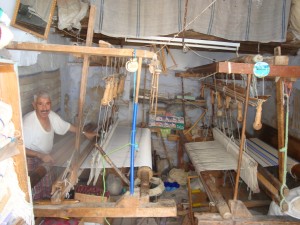
Our Festivals
A Festival is the expression of cultural inheritance. It used to accompany certain events of life such as marriages or religious celebrations. Today, it aims at developing Tunisian’ cultural assets and national and regional identities.
There are forty festivals in the country mainly in the summer time. Each festival has a dimension or a set themes such as handicrafts, theatre, symphonic music
The most significant festivals are: the international Festival of Carthage, the international festival of Hammamet, both in July and August, the cinematographic and theatrical days of Carthage in October , the Festival of the médina of Tunis during Ramadan, the Jazz Festival of Tabarka in July, the symphonic Festival of music of El Djem in August, the international Festival of the Sahara in Douz in December, the Festival of the horse in Sidi Bouzid in June, the international Festival of the oases in Tozeur in November, the Festival of Ksours in Tataouine in April, the hawking Festival of El Haouaria in June, the Festival of Ulysse in Djerba, the Festival of the oases of mountain in Tamerza in March…
Festivals reveal facets of the personality of the area or country.They constitute great cultural events.
Movies filmed in Tunisia
Tunisia constitutes an ideal set for shooting movies. Its assets are before all the stability and the safety of the people and the goods but also the softness of the climate, the blue sky and natural light of exceptional quality. The topography of the country between the Mediterranean and the Sahara creates a great diversity of landscapes, and strongly contrasted worlds.
One of the most appreciated spaces is the amazing extent of the Sahara. In Anthony Minghella’s movie, the English Patient, the film with the nine Oscars, one of the “actors” which bursts the screen is very much the desert. Among foreign films made to Tunisia, one can quote a great number of successes: The English Patient of Anthony Minghella, Star Wars of George Lucas, Indiana Jones of Steven Spielberg.
Nature
Tunisia unites various geographical, climatic and cultural characteristics that make it ideal for lovers of areas where the sea, mountains and forests overlap.
Tunisia’s dazzling sites and its landscape are combined in a small area which comprises the mysterious enchantment of the Saharan oases of Tozeur, Nefta and Douz, the snowy loneliness of the forests at Ain Draham, the excitement of the beaches of Hammamet or Sousse, the Polynesian magic of the Island of Djerba and the secret attractions of Sidi-Bou-Said, which is lost in time on its rock overlooking one of the most beautiful gulfs in the world.
Coastal Tunisia
With 750 miles of coastline, mostly unexploited, beaches of fine sand, the softness of the Mediterranean climate, shimmering sun and blue water, the Sahara Desert in the South and region of mountains, hills and green plains in the North,Tunisia offers beautiful and contrasted natural landscapes. From the Coast of the Coral in Tabarka and Bizerte; the Coasts of Carthage close to Tunis; the Hammamet resort; the port of El Kantaoui near Sousse, the Monastir and Mahdia resorts to the Djerba island, sightseeing nature in Tunisia fills visitors with wonders.
Natural Sites to visit
Often known as ‘Green Tunisia’, the Tabarka/Ain Draham coral coast region is a delightful part of the country, a region of hills, mountains and fertile plains. Temperature variations can be great, and occasional snow covers the peaks of Khroumiria. The weather is cooler in the summer season than in the south. The wooded and flower-decked foothills of Khroumiria, behind The Coral Coast, have more than a hint of unspoiled Provence, although the forests are of cork trees rather than olive. Deer, lynx, civets and jackals may be glimpsed by naturalists throughout the year. The region of Ain Draham has 80 000 hectares of cork oak, pink bay-trees, and thousands of plants as well as a horse center. This large variety of landscapes and sites where, between the trees, one can enjoy the superb blue sea of the Mediterranean, fresh air and old Roman cities nearby is an amazingly rewarding experience. Between sea and forest, Tabarka is well know for its corals, its rock coast quickly making place to beautiful white sand beaches and prestigious hotels, its fishing port, its marina and its golf. It is also a true paradise for diving, fishing, sailing and hiking.
The Cap Bon region is known as the “garden of Tunisia”. The jasmine and orange blossom scented air has an enviable sweetness. Cap Bon has a maritime climate (mild throughout the year), varied landscapes and an easily accessible coast, a combination of features which made this a popular holiday region amongst the Punic and Roman aristocrats. Jutting out between the Gulf of Tunis and the Gulf of Hammamet, Cap Bon encompasses important wine-growing areas and produces fine figs, olives, oranges, lemons and cereals.
The town of Sousse, was previously known as Hadrumete and was built by the Phoenicians in the 9th Century BC. A town which was Punic, Roman and then Muslim, Sousse has retained a great deal of character. Sousse is surrounded by very find crenellated ramparts, dominated on one side by the imposing Kasbah and on the other by the mosque and elegant Ribat. The medina houses souks which are the most typical in Tunisia. Many high-class hotels stand along the beautiful fine sand beach which stretches for several kilometers. Nearby is El Kantaoui, one of the Mediterranean’s main garden ports, with the seductive charm of its houses built in the purest tradition of Moorish architecture.
Legendary home of the “lotus eaters” and Ulysses himself, the sun-drenched island of Djerba has mile upon mile of unspoiled beaches lightened by the clear blue waters of the southern Mediterranean. As Djerba is virtually flat with little traffic, a bicycle is a great way to explore, or for the less energetic, a motorbike. Local buses and taxis are cheap and readily available too. Djerba is linked to the mainland by a causeway or ferries which run half-hourly.
Golf & Water Activities
Tunisia is rapidly gaining a reputation for being one of the Mediterranean’s foremost golfing destinations.
Until the end of the seventies, only one golf course, that of Carthage/Soukra created in 1927, existed in Tunisia.
In less than ten years, seven golf courses stretching the entire length of the Mediterranean coast were built, designed by Masters of great talent such as Ronald Fream or Martin Hawtree.
The Soukra golf course was completely restored.
Four other projects of golf are in the course of realization including one in the Sahara (PromoTunisia is currently overseeing the accomplishment of a 27 hole course in the Sahara desert).
The golfs operate all year long. Although very diverse, they all have one thing in common: they were established on premium sites, whether it is near the sea, the mountain or the desert, they all offer very beautiful panoramas.
Tunisia has eight main courses:
The Tabarka golf course is situated on a 270 acre eucalyptus, pine and oak forest overhanging the ocean on the edge of the coral coast.
The Carthage golf course demands skill and accuracy as players negotiate among hundred-year-old eucalyptus trees.
Hammamet is home to two courses:
The Yasmine golf course gives players a chance to enjoy both the Mediterranean and the surrounding hills.
The Citrus golf course is designed around six lakes and 300 acres of olive groves.
The El Kantaoui golf course in Sousse dominates the famous holiday resort of the same name and is host to numerous international competitions.
The Monastir golf course is set on a garden plateau suspended between lakes and the sea.
The Palm links golf course is also situated in Monastir and close to one of Tunisia’s best beaches.
The Djerba golf course on the island off the coast of the mainland is one of the country’s most impressive. The 27 hole course has golfers winding their way through palm trees and climbing sand dunes to reach the sea.
Tunisia guarantees a golf holiday where everything is just a little different. The sunsets, the exotic sights, the atmosphere, the local color … golf can be an adventure in itself, but Tunisia guarantees that your adventures will continue when you take off your golf shoes …
Thalasso, walking & hiking
Thalasso
Thalassotherapy is the utilization ofseawater at a given temperature,algues and marine muds with apreventive and curative aim.
Tunisia is the ideal place for thalasso services with its luxurious hotels,climate softness, sunny weather, 750 miles coastline and para-medical competency.
Installations are found in top hotels and are equipped with sophisticated top of the line equipments. The hotels propose a la carte services. The Tunisian government imposed very rigorous standards in terms of equipments and requires the presence of a doctor, medical staff and chiropractors.
Treatments include heavy legs, anti-tobacco treatment, slimming, anti-rhumatism, young mothersand beauty care .
It attracts more generally anybody who need rest and wellness care.
Following the tradition of Punic bathtubs, roman thermes, Arabic hammam, Tunisia ranks second in the world for the quality of its treatments and the professionalism of its thalasso staff
Walking & hiking
Walking and Hiking in the Tunisian hinterland is worth a detour. On foot, you can set off and explore Djerba’s rural tracks or the shady, winding roads around Tabarka, in the area around the mountains of the North West to give you a foretaste of the little-known scenery that is made for ramblers.
For example, the vast verdant landscape of forest in Ain Draham, the red-roofed town, which is perfect for long walks, and the steep mountains of the west, for trekking.
Tunisia is a country full of contrasts that possesses the gift of harmony: it has witnessed successive civilization of opposing cultures, Phoenicians, Carthaginians, Romans, Turks, Arabs, Spaniards, French, and yet in spite of the ruins and the bloodshed, the scars left are not deep.
On the contrary, this succession of administration has established continuity, with each new regime taking something for the better, from the one that preceded it.
Rome, for example, not only left to Tunisia some of the most admirable monuments of Roman Africa but also a culture, a spirit even, an impression ofcosmopolitanism and tolerance that today, twenty centuries later is still very much alive.
You may very well say that all this has little to do with holidays. Not at all. The tourism that PromoTunisia is championing not only consists of admiring beautiful sites, visiting museums and tasting the great Tunisian cuisine, but above all ofabsorbing something of the real life around.
One the most interesting Tunisian oases, Tozeur is encircled by a beautiful palm plantation. Taste the excellent local dates and visit the local gardens, at the sound of the rippling water. Also visit the Andalusian style Medina and the Dar Chraiet museum.




